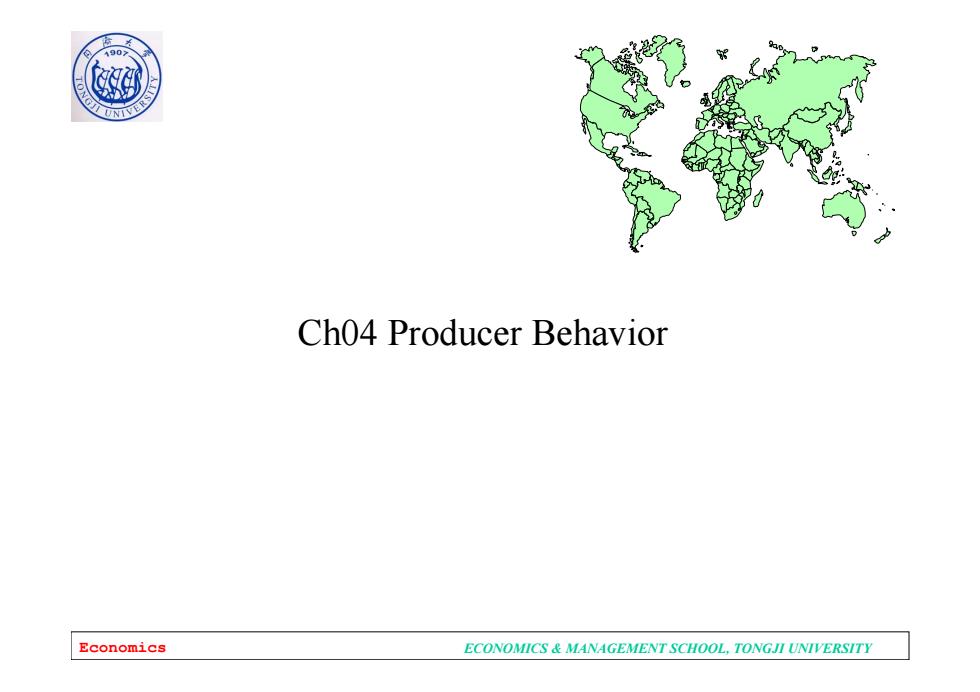
1907 Ch04 Producer Behavior Economics ECONOMICS MANAGEMENT SCHOOL,TONGJI UNIVERSITY
Economics ECONOMICS & MANAGEMENT SCHOOL, TONGJI UNIVERSITY Ch04 Producer Behavior
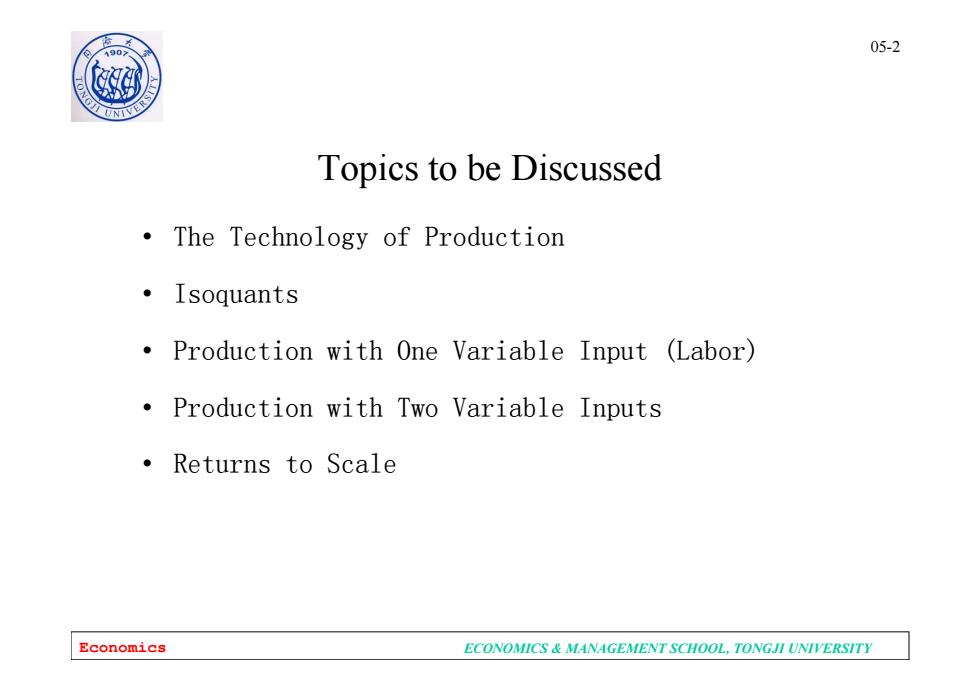
05-2 0 ④ Topics to be Discussed The Technology of Production ·Isoquants Production with One Variable Input (Labor) Production with Two Variable Inputs ·Returns to Scale Economics ECONOMICS MANAGEMENT SCHOOL,TONGJI UNIVERSITY
Economics ECONOMICS & MANAGEMENT SCHOOL, TONGJI UNIVERSITY 05-2 Topics to be Discussed • The Technology of Production • Isoquants • Production with One Variable Input (Labor) • Production with Two Variable Inputs • Returns to Scale
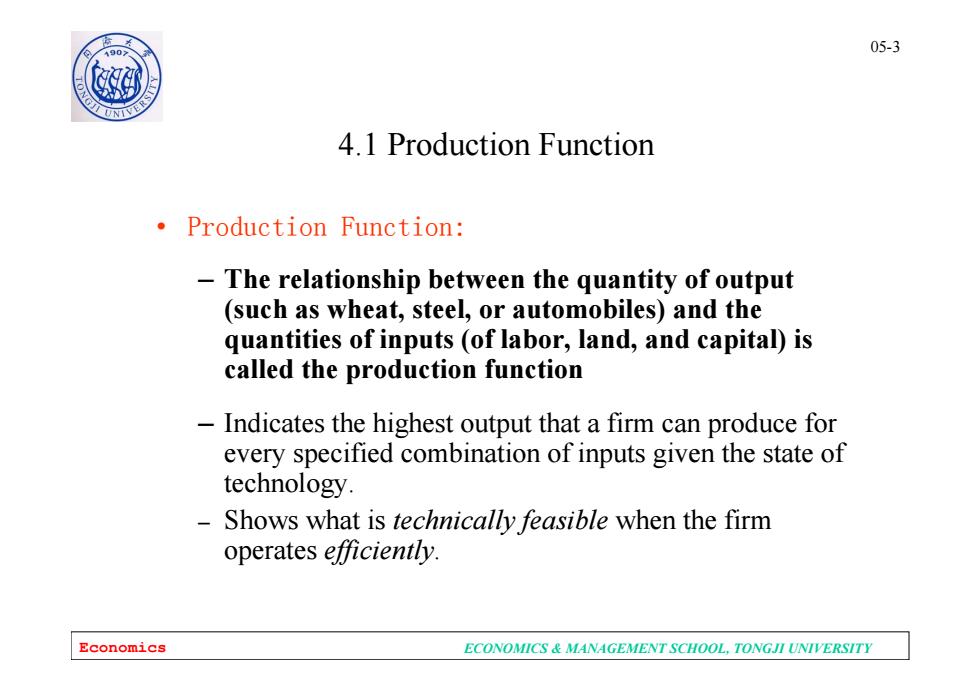
1907 05-3 4.1 Production Function Production Function: The relationship between the quantity of output (such as wheat,steel,or automobiles)and the quantities of inputs(of labor,land,and capital)is called the production function Indicates the highest output that a firm can produce for every specified combination of inputs given the state of technology. Shows what is technically feasible when the firm operates efficiently. Economics ECONOMICS MANAGEMENT SCHOOL,TONGJI UNIVERSITY
Economics ECONOMICS & MANAGEMENT SCHOOL, TONGJI UNIVERSITY 05-3 4.1 Production Function • Production Function: – The relationship between the quantity of output (such as wheat, steel, or automobiles) and the quantities of inputs (of labor, land, and capital) is called the production function – Indicates the highest output that a firm can produce for every specified combination of inputs given the state of technology. – Shows what is technically feasible when the firm operates efficiently
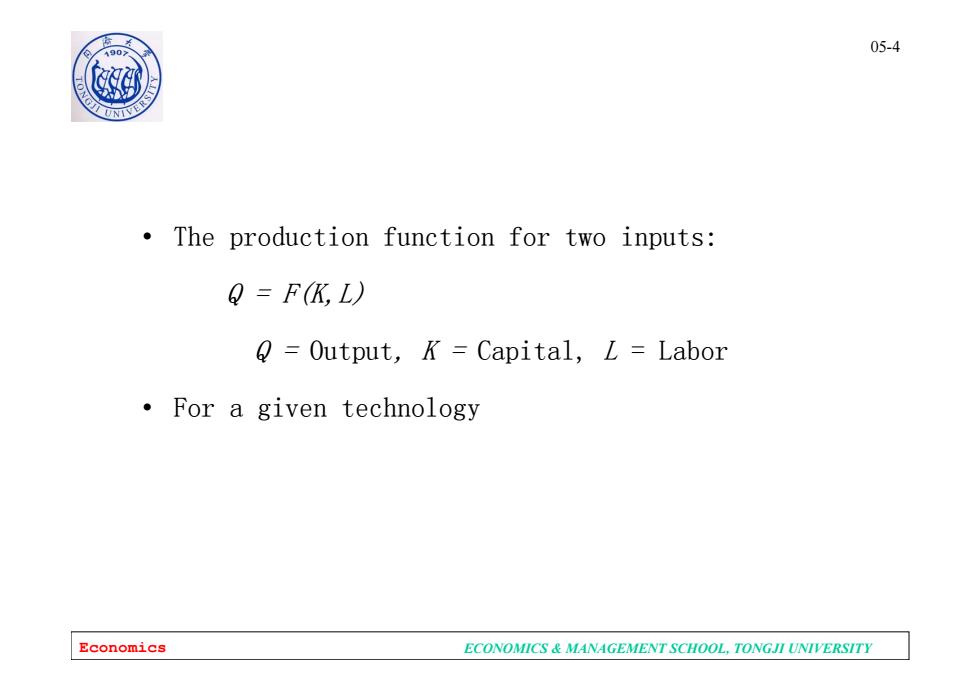
05-4 0 The production function for two inputs: Q=FK,L) Output,K=Capital,L Labor For a given technology Economics ECONOMICS MANAGEMENT SCHOOL,TONGJI UNIVERSITY
Economics ECONOMICS & MANAGEMENT SCHOOL, TONGJI UNIVERSITY 05-4 • The production function for two inputs: Q = F(K,L) Q = Output, K = Capital, L = Labor • For a given technology
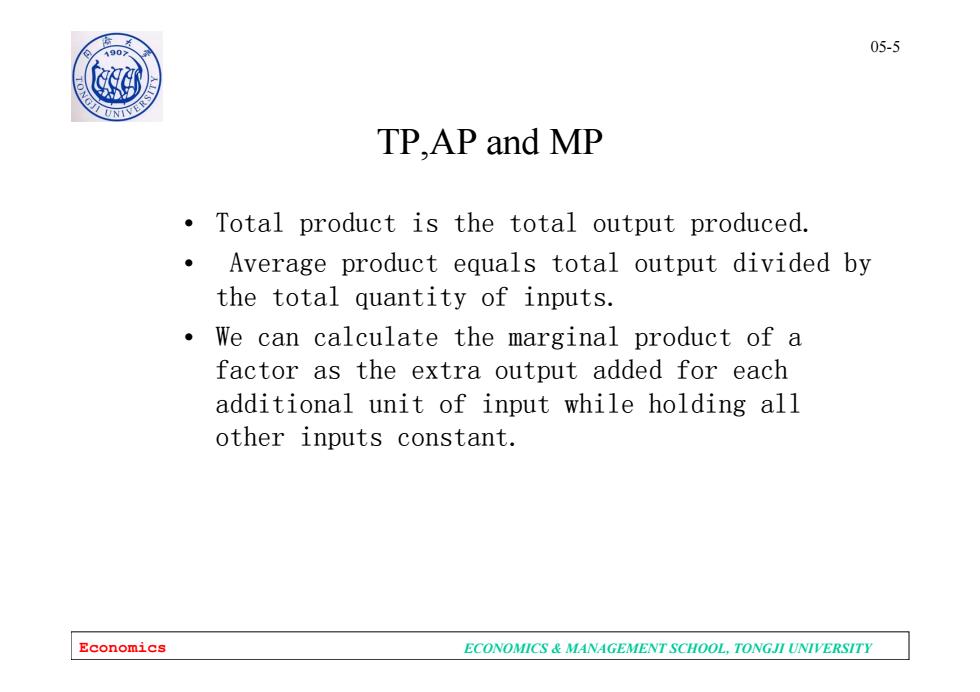
1907 05-5 TP,AP and MP Total product is the total output produced. Average product equals total output divided by the total quantity of inputs. We can calculate the marginal product of a factor as the extra output added for each additional unit of input while holding all other inputs constant. Economics ECONOMICS MANAGEMENT SCHOOL,TONGJI UNIVERSITY
Economics ECONOMICS & MANAGEMENT SCHOOL, TONGJI UNIVERSITY 05-5 TP,AP and MP • Total product is the total output produced. • Average product equals total output divided by the total quantity of inputs. • We can calculate the marginal product of a factor as the extra output added for each additional unit of input while holding all other inputs constant